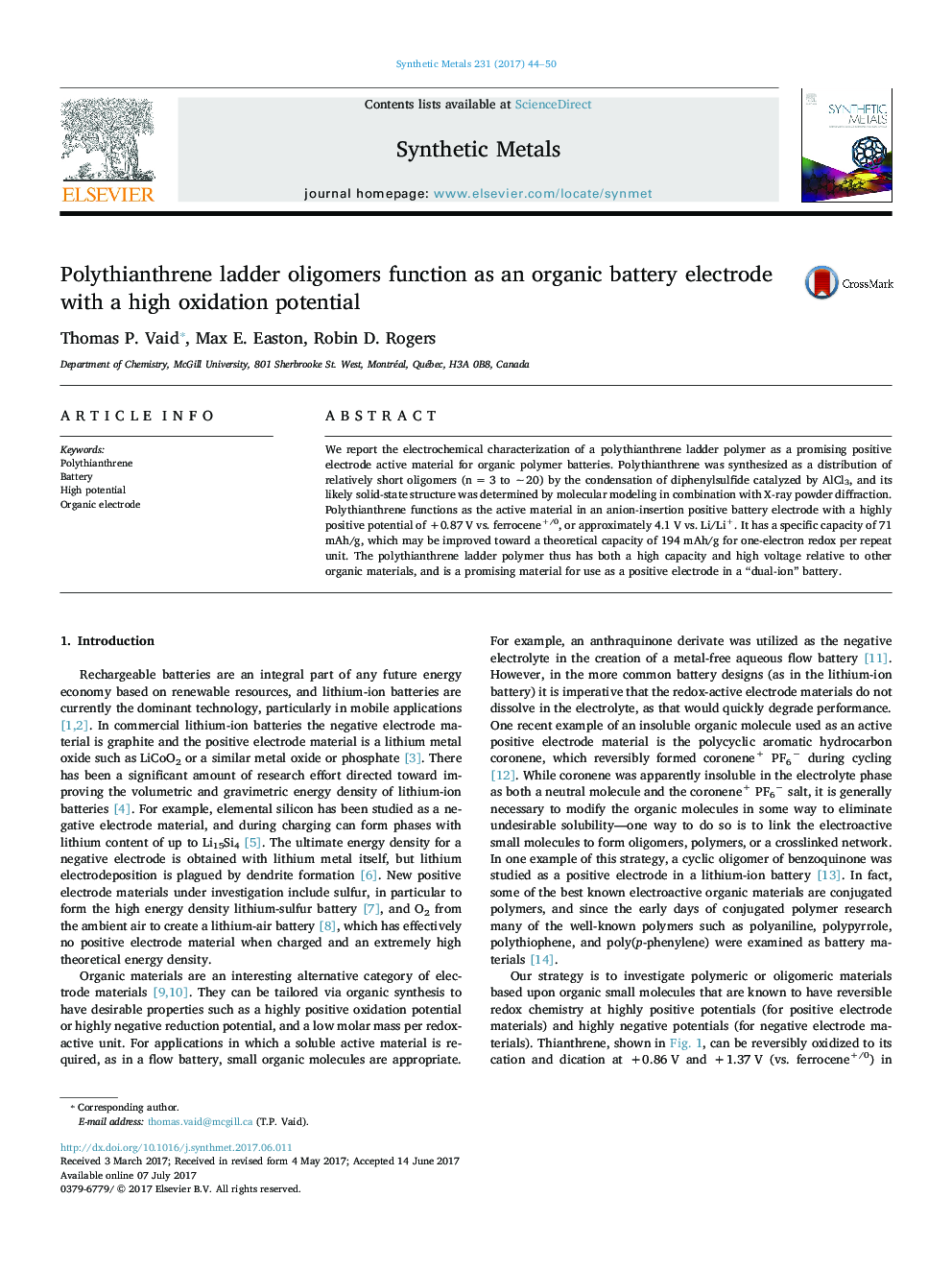| Article ID | Journal | Published Year | Pages | File Type |
|---|---|---|---|---|
| 5435362 | Synthetic Metals | 2017 | 7 Pages |
â¢A polythianthrene ladder polymer consists of oligomers with n = 3 to 10 or higher.â¢The polymer crystallizes with zig-zag chains which pack in space group P21/m.â¢The oxidation potential of polythianthrene is +4.1 V vs. Li/Li+.â¢As a battery electrode it has a capacity of 71 mAh/g, which may be improved to a theoretical 194 mAh/g.
We report the electrochemical characterization of a polythianthrene ladder polymer as a promising positive electrode active material for organic polymer batteries. Polythianthrene was synthesized as a distribution of relatively short oligomers (n = 3 to â¼20) by the condensation of diphenylsulfide catalyzed by AlCl3, and its likely solid-state structure was determined by molecular modeling in combination with X-ray powder diffraction. Polythianthrene functions as the active material in an anion-insertion positive battery electrode with a highly positive potential of +0.87 V vs. ferrocene+/0, or approximately 4.1 V vs. Li/Li+. It has a specific capacity of 71 mAh/g, which may be improved toward a theoretical capacity of 194 mAh/g for one-electron redox per repeat unit. The polythianthrene ladder polymer thus has both a high capacity and high voltage relative to other organic materials, and is a promising material for use as a positive electrode in a “dual-ion” battery.
Graphical abstractDownload high-res image (116KB)Download full-size imageA poly(thianthrene) ladder polymer is reversibly oxidized at +4.1Â V vs. Li/Li+ and functions as a positive battery electrode with a capacity of 71 mAh/g.
